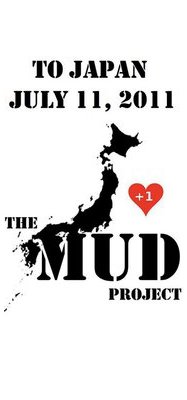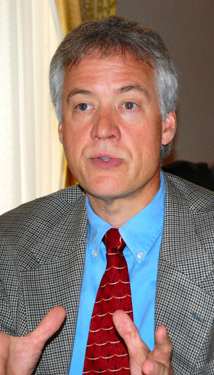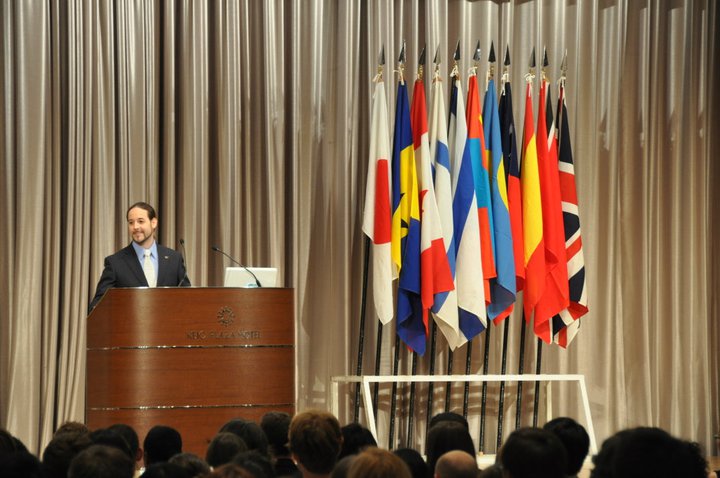Event: Akari Lantern Project (London)
Via Embassy of Japan in the UK. Posted by Dipika Soni (Ishikawa-ken, 2003-06). Dipika has recently moved back to London as is currently looking for new work opportunities related to Japan, translation, or other fields.
——————————————————————————————————————————–
 The Akari Lantern Project has been organised by a group of people, both Japanese and non-Japanese, to raise money for the JAPAN SOCIETY TOHOKU RELIEF FUND which is helping local communities affected by the Great East Japan Earthquake.
The Akari Lantern Project has been organised by a group of people, both Japanese and non-Japanese, to raise money for the JAPAN SOCIETY TOHOKU RELIEF FUND which is helping local communities affected by the Great East Japan Earthquake.
As part of the Mayor of London’s Thames Festival, on the 10th &11th September, they will hold a lantern making workshop and other Japanese craft activities on the grass outside the Tate Modern.
This will culminate in a Lantern Parade as part of the Night Carnival. The lantern parade will be accompanied by Japanese drumming by the JOJI HIROTA TAIKO DRUMMERS.
People can take part by making lanterns out of recycled bottles, creating their own pin badges, origami cranes and stop-frame animation.
For more details, please click on the following link:
http://www.uk.emb-japan.go.jp/japanuk150/events/andmore/Akari_Project2011.html
NY Miyagi-kenjinkai requests help from U.S. citizens who have lived or worked in Miyagi, Fukushima or Iwate
******************
Thanks to Takahiro Ito of the Japan Local Government Center (aka CLAIR NY) for sharing this information about a request from the NY Miyagi-kenjinkai for help from U.S. citizens who have lived or worked in Miyagi, Fukushima or Iwate:
Dear Friends in the Japanese Production Industry — WE NEED YOUR HELP!
We are putting together a video to send our best wishes to people who were devastated by the earthquake and tsunami on March 11th, 2011.
It’s for a branding commercial sponsored by a Japanese Semiconductor maker, scheduled to air during the JAPAN CORPORATE TEAM WOMEN’S MARATHON RELAY RACE this December.
The marathon runs through the cities in Miyagi prefecture that were most affected by the disaster.
We want to make contact with any U.S. Citizens you know who may have lived, worked, or visited FUKUSHIMA, IWATE, MIYAGI — the area recently devastated by the events of March 11th — and record their message in the NY or LA metro areas.
Ideal candidates are men and women between the ages of 20-40. It will be a chance for them to be interviewed for a TV message that will cheer on a recovering Japan, and help lift the spirits of the whole country!
If you know someone in the west coast please get in touch with office in California:
TAKA KAGUMA
tk@downtownreel.com
DOWNTOWN REEL LA
3122 Santa Monica Blvd.
Santa Monica, CA 90404
TEL (310) 828-9200
Please fill out the below application and send it, along with a photo, to Taka or me. Interviews will be conducted this October or November.
Our client will go through the applicants and select the interviewees, each of whom will receive $1,000 for their participation.
Thanks for your help and support!
Best regards,
Miho Uchida Read More
Asahi Shimbun article on Andy Anderson and his family’s efforts to support Ishinomaki
************
Thanks to JET alum Mark Flanagan for sharing this article:
“Taking over a daughter’s dream to bridge Japan and U.S.”
By HIROSHI ITO / Correspondent
September 3, 2011
Andy Anderson never expected he would find himself trying to fill his daughter’s shoes by acting as a bridge between the United States and Japan.
But that all changed after his daughter, Taylor, perished in the massive tsunami spawned by the March 11 Great East Japan Earthquake.
Anderson, 53, a realtor living in Midlothian, in the suburbs of Richmond in the U.S. state of Virginia, is determined to continue the work that his 24-year-old daughter started.
Taylor had been teaching English to a handful of elementary and junior high schools in Ishinomaki, a coastal city in Miyagi Prefecture that bore the brunt of the tsunami that devastated the Tohoku region.
She has been working as a teaching assistant since August 2008 under the Japan Exchange and Teaching Program, a Japanese government initiative known as the JET program. Read More
Return to Tohoku: WSJ article on ex-JET’s return
Nice article on the Wall Street Journal’s RealJapan blog titled “JET Calls in Favors in Tohoku“ about ex-JET Tanya Gardecky (Miyagi-ken, Shiogama-shi) and her return to Tohoku through the MOFA program. Follow JETwit updates on Tanya here and follow Tanya’s ongoing blog of her experience here.
Link to the article: http://blogs.wsj.com/japanrealtime/2011/09/01/jet-calls-in-favors-in-tohoku/
Volunteer: Ex-JET’s “The MUD Project” aids Tohoku
Just found out about Colin Rennie (CIR Yamagata-ken, 2007-10) who has been running a volunteer project called “The MUD Project“ that has enabled many JETs to volunteer in Tohoku with particular emphasis on Minamisanriku as well as other areas of Miyagi and Iwate.
Lots of good info, photos and updates on the project’s Facebook page: https://www.facebook.com/mudproject
Click here for an up to date list of JET-related Disaster Relief Projects.
JQ Magazine: JQ&A with JET Alum Mike Maher-King of Smile Kids Japan

"We are already talking to some universities and some private companies about Smile Kids Japan and soon I hope to have more volunteers than there are JETs in Japan! The JET network and support of AJET is at the very core of what we do."
By Renay Loper (Iwate-ken, 2006-07) for JQ magazine. Renay is a freelance writer and Associate Program Officer at the Japan Foundation Center for Global Partnership. Visit her blog at Atlas in Her Hand.
Mike Maher-King (Fukui-ken, 2006-11), originally from Shoreham-by-Sea, UK (near Brighton) and founder of Smile Kids Japan, which was created with the mission to have every orphanage in Japan visited regularly by a volunteer team in an effort to provide children with mentoring, cultural exchange and a newfound sense of trust.
Having making several Japanese friends while attending Royal Holloway, University of London, Mike eventually traveled to Japan and while there, fell in love with the people, the language, the culture, and most of all…the food! After working for a couple years in the UK, Mike returned to Japan as an ALT and eventually went on to create an organization that would touch the lives of thousands of Japanese children.
Recently, Mike took a few moments away from his hectic schedule to share with us a little about his organization, the emergence of volunteerism in Japan, and the impact the 3/11 earthquake and tsunami have had on his work.
When you first began Smile Kids Japan, did you realize you were introducing the concept of mentoring to the Japanese you were working with?
I didn’t actually realize that there are not as many opportunities for people to volunteer here in Japan as there are in the UK, USA, Canada. etc. until I started looking for a way to volunteer. I think with the cultural senpai-kohai (seniority based relationships) system here in Japan, the idea of mentoring isn’t at all new. However, this application of it is relatively new.
What challenges did you encounter doing volunteer work in Japan, where volunteerism isn’t as popular as it is in countries such as the UK or U.S.?
Setting up the very first meeting took a few months and lots of Japanese bureaucracy skills. But it was definitely worth the prodding! That and the initial 10 minutes of shyness, and walking into a room 1/4 of the size I expected with 10 more kids than we thought would choose to come meant all our planning wasn’t quite right! Further, it was also a little tricky to explain to some of the children’s homes what we wanted to do.
What do you think Smile Kids Japan has done for volunteerism in Japan?
There are so many people who do not realize the need for volunteers until they see it with their own eyes. I think that we are [now] approaching the tipping point. However, it is still a work in progress. We have provided an outlet for many people that want to help but didn’t have a channel for their energy. The [recent] earthquake initially transformed things with a huge amount of people volunteering. It will be interesting to see if this is carried back to people’s towns all around Japan.
Return to Tohoku: Tanya Gardecky “Hi ho! It’s off to school I go!”
******************
Tanya Gardecky (Miyagi-ken, Shiogama-shi) is one of the 20 Tohoku region JET alumni selected by the Ministry of Foreign Affairs (MOFA) to return to their town to both engage in volunteer efforts and also help document and share what’s going on there.
Here’s an excerpt from Tanya’s latest post: “Hi ho! It’s off to school I go!”
But when I went to the grade 3 classes the teachers changed it a bit and had some of the students mention their experience with the March 11th earthquake and tsunami. From what I understood, the students were very surprised by the earthquake and were confused about the tsunami. Some didn’t believe the tsunami was happening or that it was that big, others simply had no idea what was happening.
JETwit will continue to post updates from Tanya and other participating alums. You can also follow Tanya’s blog at http://www.travelblog.org/Bloggers/ShiogamaJET/.
Click here to read other “Return to Tohoku” posts.
If you are returning to Tohoku and would like to share your updates, please feel free to e-mail jetwit [at] jetwit.com.
Return to Tohoku: JET alum Tanya Gardecky arrives in Shiogama
Tanya Gardecky (Miyagi-ken, Shiogama-shi) is one of the 20 Tohoku region JET alumni selected by the Ministry of Foreign Affairs (MOFA) to return to their town to both engage in volunteer efforts and also help document and share what’s going on there.
Here’s an excerpt from Tanya’s latest post:
I eventually made it Shiogama (and instantly noticed some damage around the train station) and went city hall. There I was greeted by the Mayor and vice-mayor, along with many staff from the Shiogama Board of Education, and they welcomed me back. We talked about the state of the city after the earthquake, and I was shown a book full of photos of the damage in Tohoku. Most I had seen in the news already but to see them all in one book was a bit of a shock. They said they had made much progress in the reconstruction, and this was something I wanted to see. From city hall I went to the Board of Education to meet the staff again and to discuss my week. It’s a very busy schedule but I know I can’t afford to get worn out because there are people, places, and things I want to and need to see.
JETwit will continue to post updates from Tanya and other participating alums. You can also follow Tanya’s blog at http://www.travelblog.org/Bloggers/ShiogamaJET/.
If you are returning to Tohoku and would like to share your updates, please feel free to e-mail jetwit [at] jetwit.com.
Article: “The Quiet Success of the JET Program”
*****************
Thanks to Ryan Hart, former JETAA International Vice-Chair, USA Country Rep and Pacific Northwest JETAA President, for passing on this piece that has been sent out by the Japanese Embassy in D.C. as well as by other Japanese Consulates in the U.S.:
Homecoming & Charitable Activities: The Quiet Successes of the JET Program
-Susan Laszewski, Embassy of Japan
In August the Ministry of Foreign Affairs, in cooperation with the Japan Tourism Agency introduced a “homecoming” program through which former participants of the JET Program who served in areas that have been affected by the Great East Japan Earthquake will have the opportunity to go back. For the months of August and September the 14 participants in the program, 8 from the U.S., will have the opportunity to learn about the current situation on the ground and share what they learn with the public back in the U.S.
If you are only passingly familiar with the JET Program, you may think it’s all about teaching English in Japan. Even those who are well versed in the program often get so focused on the language aspect of it that they forget about some of the program’s other aims. In fact, language education is just one means to the program’s ultimate end goal: grass-roots international exchange.
As the Program’s website states, “many former JET participants use their experiences in Japan to continue enhancing relations between Japan and their home countries.” In fact, while politicians and educators have been busy debating and trying to measure the affect of the program on English education, JET has been quietly successful in this larger goal. The hardships that Japan has faced during these last five months, particularly the Tohoko area where the homecoming program is focused, have shown us just how successful.
It should come as no surprise that there would be interest in this program. Since March, chapters of the JET Alumni Association (JETAA) around the country have shown an outpouring of support toward the country they briefly knew as home. They’re rebuilding schools, releasing music videos, and holding fundraising events ranging from benefitsin Northern California to hot yoga in New York.
The JETAA DC chapter has been anything but silent during this time. When news of the earthquake struck, JETAA DC immediately started asking what they could do to help. “Focusing on anything other than Japan was almost impossible,” says President Maurice Maloney. “From an association standpoint, we (along with assistance from CLAIR and the JET Office in the Embassy) stayed focused on keeping our membership informed on the developments in Japan and how JETs were coping. JETAADC leadership was in constant communication with the JETAA USA country representatives, and within 24 hours, we had the beginnings of our National Relief Fund.”
JETAA DC’s first fundraising event for the Fund, held at Bourbon in Adams Morgan on April 21st, was a smashing success. But the alumni are nowhere near finished. As Maloney tells Japan Now,
“JETs and JET Alumni are not just limited to one role in the reconstruction of Japan.” In fact, “JET Alums have volunteered expertise in the field as emergency workers, have organized events to raise money for the relief effort, and some have been involved in high level discussions with policy makers in Washington, DC.”
“Regardless of their specific actions, I think the most important role JETs and JET Alumni can play is by keeping attention drawn to Japan and the Tohoku region during the rebuilding process. Many times, the rebuilding process is ignored after major disasters, and JETs’ and JET Alums’ connection to Japan can keep the rebuilding process fresh in the minds in their respective communities.”
The JET Program has been carefully cultivating grass-roots ties with other countries since 1987. The support alumni have shown, whether returning to their second home in Japan or sending their thoughts and support from their own countries, is a testament to its success.
Read the Ministry of Foreign Affairs’ and Council of Local Authorities for International Relations’ messages of appreciation to JET participants and alumni.
Return to Tohoku: JET alum Tanya Gradecky arrives in Japan
Tanya Gardecky (Miyagi-ken, Shiogama-shi) is one of the 20 Tohoku region JET alumni selected by the Ministry of Foreign Affairs (MOFA) to return to their town to both engage in volunteer efforts and also help document and share what’s going on there.
Here’s a quick excerpt from the first post on her travel blog:
“I’m about to head off to the Ministry of Foreign Affairs for a meeting and then I will be on my way to Sendai and Shiogama City in Miyagi Prefecture!!”
JETwit will continue to post updates from Tanya and other participating alums. You can also follow Tanya’s blog at http://www.travelblog.org/Bloggers/ShiogamaJET/.
If you are returning to Tohoku and would like to share your updates, please feel free to e-mail jetwit [at] jetwit.com.
New JETs join AJET in record numbers
Via AJET:
This year, the JET Programme welcomed over 1700 new participants to its July-August Orientations at the Keio Plaza Hotel in Shinjuku, Tokyo. AJET’s presence at these orientations resulted in an unprecedented amount of new JET memberships. We spoke with Matthew Cook, (2011-2012 Chair) about his views on the services that AJET provides.
What do you think contributed to the overwhelming amount of sign-ups at this year’s orientation?
Matt: Well, I think the re-brand had a great deal to do with it. When we were able to show that AJET is a tangible resource, an effective voice, and a community that JETs are actually a part of, it gave them a great incentive to sign up with us. Not to mention, all of the services we offer are FREE, and who doesn’t like free stuff?
CLAIR also gave me the opportunity to speak to the JET’s in the opening ceremonies, and I really wanted to take full advantage of that. I tried to make them understand that they are a part of something bigger than themselves. That they’re not alone. That we’re in this thing together, and we support each other…. and that’s what’s special about us compared to the other English teachers that are hired in Japan. I think that struck a chord with everyone, and hopefully, we’re going to see AJET and the support system we provide grow exponentially after this great start at TO Orientation.
How do you see AJET’s role changing this year?
Matt: From this year on, AJET is going to be much more accessible to JETs. The new website is easy to navigate, and we’ve got a new magazine and eBulletin that are focused and let JET’s know what’s new and happening every month. Social networking is at an all time high in the world. To match that, our Twitter and Facebook accounts are reaching out, connecting, and keeping JET’s in touch in ways through outlets they’ve never had access to before. For example, each block now has a Facebook group that connects local chapters not just to us, but to each other all across Japan. I’ve really been quite shocked at how much the average JET has been engaged and helped each other with these groups. It is fantastic to see how everyone is getting involved now that they have a platform through which to do it!
I think these groups are also going to allow us to get more participation in our bi-annual surveys, which in turn, will give MEXT and CLAIR a better idea of what JET’s need, and allow us to represent everyone more evenly across the board.
I also forsee this council forging a much stronger bond with JETAA in order to make the transition to “life after JET” easier for people who are on the program now. This close relationship will help us to stay connected and maintain a close fraternity with each other. Because we’ve all shared a common experience like none other, and what better way to revisit that than to get together with like-minded individuals to share those experiences, and find new ways to start ones?
Any upcoming projects to watch out for?
Matt: Overall, I think this year will be a springboard to the future! I’m so proud of our council and their hard work. I think they’ve set a standard for all the AJET councils of the future and we have nothing but the best to look forward to! I personally cannot wait to see what AJET accomplishes this year, and in the years to come!
We are so excited to publish our first issue of AJET Connect Magazine, coming this September. Also be on the look out for our iPhone app, due out later this year!
Another Canadian JET to visit Tohoku via the MOFA program
Turns out the Ottowa Citizen article was not entirely correct about Brent Stirling (Fukushima-ken, Fukushima-shi, 2006-10) being the only Canadian among the 20 ex-JETs selected for the MOFA program to go back to their town/city in Tohoku, help with volunteering and write about and share their experience.
But the post on JETwit about the article did help generate a response from Toronto-based JET alum Tanya Gardecky (Miyagi-ken, Shiogama-shi) who will also be participating and whose travel blog you can follow here: http://www.travelblog.org/Bloggers/ShiogamaJET/
JETAA Tokyo supports Tokyo de Volunteer event
Via JET alum Emily Duncan’s Japan Earthquake Disaster Relief Idea Exchange Facebook group:
JETAA Tokyo is pleased to support Tokyo de Volunteer in their “Beauty de Volunteer” volunteer activities. As these trips have received corporate sponsorship, free bus transportation will be provided. Please contact tokyo.de.volunteer@gmail.com.
For more info from Tokyo de Volunteer’s website go to: http://tkdv.blogspot.com/
FYI, Tokyo de Volunteer is an offshoot of New York de Volunteer, the New York based non-profit founded by wonderwoman Noriko Hino. Tokyo de Volunteer was started by former New York members who had returned to Tokyo and wanted to continue their volunteer spirit.
All of which is to say, collaboration seems to be a natural fit between JETAA Tokyo and Tokyo de Volunteer as well as between JETAA New York which has engaged in many activities with New York de Volunteer.
***************
Ottawa based JET alum Brent Stirling (Fukushima-ken, Fukushima-shi, 2006-10) is one of only 2 Canadians out of 20 JET alumni selected to return to the Tohoku region to volunteer, engage and share their experience for the benefit of others, according to an article in the Ottawa Citizen.
(Note: This post previously repeated the error in the Ottawa Citizen article that Brent was the only Canadian participating. But it turns out that Toronto-based Tanya Gardecky (Miyagi-ken, Shiogama-shi) will also be participating.)
Stirling, who writes on his blog ForYourBrentertainment and was actively involved in the creation of Quakebook following the Tohoku Earthquake and Tsunami, submitted a proposal which was accepted by the program established by the Ministry of Foreign Affairs together with the Japan Tourism Agency to bring 20 Tohoku-area JET alums back to Tohoku to play a role in helping their communities and then spread word of their experience afterwards.
Read the full Ottawa Citizen article here: “Months of blogging leads to trip to Japan: Kanata teacher will help with disaster relief in the country he writes about”
JETwit needs your help identifying any earthquake/tsunami/nuclear disaster relief projects or efforts that have been started, organized, managed or otherwise undertaken by JETs or JET alumni.
What else is missing from this list?
View Japan Relief Efforts in a larger map
View Japan Relief Efforts in a larger map
The ones we’re aware of to date (8/12/11) are:
1. Smile Kids Japan (founded by Mike Maher-King (Fukui-ken, 2006-11) collaborating with Tokyo-based NPO Living Dreams to form the Smiles & Dreams Tohoku Kids’ Project (among other efforts).
2. The Fruitree Project, started by Paul Yoo (Akita-ken), which has now evolved into Volunteer AKITA and has led to the Big CLEAN which has already brought volunteers to help cleaning efforts in Kessenuma.
3. I’ve heard that Fukushima JETs have been organizing efforts to clean up the beaches, but I don’t have any details. Can anyone provide more info?
4. Hearts For Haragama (http://hearts4haragama.wordpress.com). Billy McMichael (CIR Fukushima) is one of the 7 founders of project aimed at raising funds for the Haragama Youchien kindergarten in Soma, Fukushima. (Thanks to former JETAA DC President Michelle Spezzacatena for passing this on.)
5. “Kat Geeraert, an ALT in Soma (Fukushima), is doing an amazing job with her foundation “Friends of Soma.” http://www.somafriends.com/ (Thanks to Catherine Lefrancois (JHS ALT in Fukushima-ken, Fukushima-shi) for passing this on.)
6. AJET is playing a significant role in facilitating and coordinating volunteer efforts for current JETs and has also been collaborating with other good organizations/efforts such as Peace Boat, Foreign Buyers Club and 5toSurvive. (Thanks to Cailin Arena (Osaka) for passing this on.)

7. “Save Miyagi was founded by Canon Purdy (Miyagi-ken, 2008-10) to help out students in Minamisanriku. Canon is currently back in Japan, working with officials to see where the money will be used.” (Thanks to Jen Wang (Miyagi-ken) for passing on the info.)
8. Hotdogs and Hugs is an aid organization formed by Saga-ken JETs. Among other things, they organized a volunteer group that traveled all the way from Saga (western Kyushu) up to Tohoku, collecting donations and fundraising along the way. (Thanks to Ling Tran (Saga-ken, Yoshinogari-shi, 2009-11) for passing on the info.)
9. Osaka AJET: “We have done extensive food drives and collections through our schools we work in, those goods, money, supplies have then been coordinated with Kozmoz International (A small not-for profit in Kyoto) and we have taken the needed items to Tohoku ourselves. We will be doing another drive across Osaka, hopefully in dozens of schools where JETs are placed from the start of this second term.” (Thanks to Matthew Cook, who serves as both AJET Chair and is a member of Osaka AJET, for sharing this info.)
10. The MUD Project: It turns out that Colin Renie (CIR Yamagata-ken, 2007-10) has been running a volunteer project that has enabled many JETs to volunteer in Tohoku with particular emphasis on Minamisanriku as well as other areas of Miyagi and Iwate. Lots of good info, photos and updates on the project’s Facebook page: https://www.facebook.com/mudproject
**********
What else is missing from this list?
Please post to the comments section or e-mail jetwit [at] jetwit.com with more info.
Yoroshiku!






